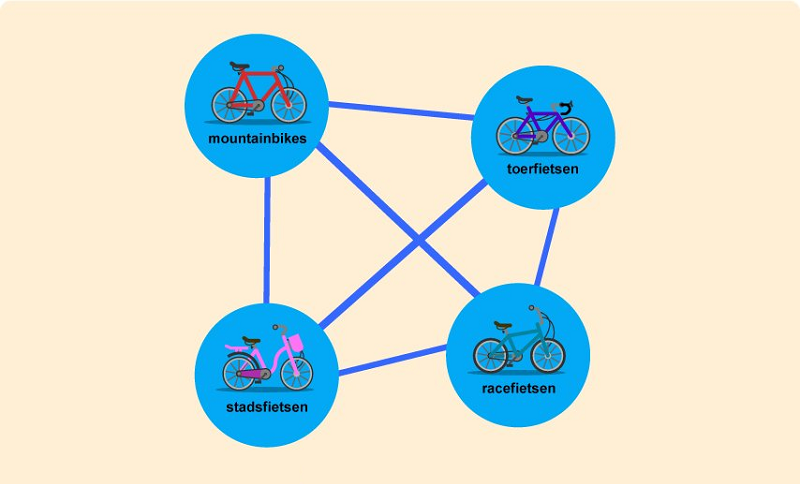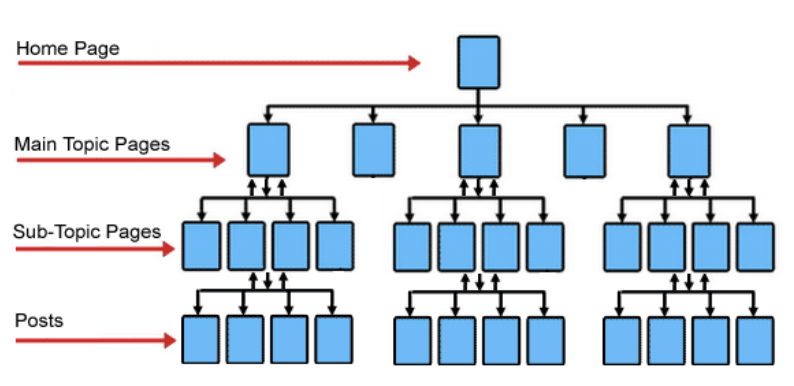How to organize content on a website is a necessary activity for the website management process. A website is clearly distributed in layout according to Silo structure then search engines can easily crawl the content. If you are attracting traffic, engagement by organizing content on the website. Then you can not miss this article. So What is Silo Structure?? How to build this structure for the website? Please follow the article below of MarkKnow for answer!
What is Silo Structure?
The Silo Structure is an organizational method for web content that groups related topics into distinct categories or “silos.” Each silo contains a main topic and subtopics, creating a hierarchical structure that helps both users and search engines navigate your content. This approach mimics the way our brains naturally categorize information, making it easier for visitors to find what they’re looking for.
For instance, if you run a gardening website, you might have silos for “Vegetable Gardening,” “Flower Gardening,” and “Garden Design.” Each of these silos would include articles and resources specifically related to that category, helping to create a comprehensive resource for users interested in gardening.
Key Components of Silo Structure
- Main Topics: These serve as the primary categories of your website.
- Subtopics: These are the detailed articles or pages that fall under each main topic.
- Internal Linking: A crucial aspect of siloing is the strategic linking between related pages to enhance navigation and SEO.
The Role of Silo in Website SEO
First, building Silo will help Google recognize new information quickly. From there, it is easier to find the website. Internal links are recommended when building Silo. Because the links will be closely linked together.
Besides, Silo structure also supports increasing PageRank (PR). Because it will create a system of links. Allowing PageRank to circulate easily between pages. Therefore, it will improve the website’s ranking score on Google.
Finally, Internal links will support the process of improving the quality of website SEO and increase the ability to navigate on the website. Users will also have a better experience. Because the related content that needs to be built is very easy to see.
How to organize a silo structure for your website
Organizing Silos for a new website is simpler than reorganizing Silos for an existing website. You can quickly see how to organize Silos right below:
Identify the topic
To build a Silo, you must determine what topic groups the website has. You can base it on the discussion questions about the website. What field is this website in? What is the goal of building the website? What do readers get from the website?… Only when you understand what you want to build on the website can you know what topic groups to implement.
Layout ideas Silo structure
Based on the selected topics, you need to build SEO-standard article content for each topic group. At the same time, clearly define the website’s goals and propose compatible strategies.
Building a link system
Building a system of links will help to solidify the topic in terms of content and meaning. Each Silo needs to have at least 5 links to support a website.
Deployment and construction Silo structure
Based on the structure allocation, build quality content for each topic. Don’t forget to review the links on the website.

4-step process to organize Silo for website
Construction process Silo structure similar to the Silo organization method. But it is much more specialized and incorporates many more elements.
Step 1: Determine website topic
As a website administrator, you must answer the question: “When mentioning a website or Brand, what do users think of?”. This is the core topic when you build Silo structure. Your perception of your website does not clearly reflect the information users are looking for. Therefore, for users to understand your website, they must determine what the main activities of the website are? In which, 3 main elements describe the core topic of the website:
- What topics are being ranked right now?
- What topics are relevant to your website’s field of activity?
- How do you want to develop the topic?
Based on the core elements, you can build separate but related topics. These topics are the basis for you to set up, organize and build categories for your website.
Step 2: Build a Physical Silo System
Let’s learn how to build physical Silos through category-level allocation. Category Silos reinforce the theme by grouping similar and related content. The more related content is arranged together, the easier it is for users to find information. And the larger the website, the deeper the category system. One thing to note is that Silos operate separately. There is no related content or any other cross-linking.
Step 3: Build a Virtual Silo System
Silo Structure Virtual Silos are built based on cross-links that form topic groups on the website. Links between Silos and links within Silos are collectively called Internal links. The process of building virtual Silos will be useful for sites that do not have a category system. Or structures that have been established and are difficult to change.
Step 4: Create keyword-rich content
Ultimately, content is king. Publish keyword-rich content for the right silos. It’s better to create quality, meaningful content than keyword stuffing.
You can rely on some algorithms or tools. To determine the Search Volume between keywords. Based on the level of competition, you can choose keywords that are suitable for the purpose of website development.

Silo Structure is one of the factors that contribute to building your website better. Through this article MarkKnow Hope you know how to build Silo for your website. If you need more information about website knowledge, SEO knowledge, please contact us.
Real-World Examples of Silo Structure
To better understand the Silo Structure, let’s look at some successful examples:
Example 1: A Travel Blog
A travel blog might create silos based on destinations, such as “Europe,” “Asia,” and “North America.” Each destination would feature articles about specific countries, cities, and travel tips, making it easy for readers to find relevant information.
Example 2: An E-commerce Site
An e-commerce site could organize its products into silos based on categories like “Electronics,” “Clothing,” and “Home Goods.” Each category would then include subcategories and individual product pages, enhancing the shopping experience.
FAQs
What is a Silo Structure in content organization?
A Silo Structure is a method of organizing website content into distinct categories or “silos,” making it easier for users and search engines to navigate.
How does a Silo Structure improve SEO?
It enhances SEO by improving keyword targeting, crawlability, and page authority through internal linking.
Can I use Silo Structure for my blog?
Absolutely! A Silo Structure works well for blogs by helping to categorize and organize content effectively.
What are the key components of a Silo Structure?
The key components include main topics, subtopics, and internal linking.
Is Silo Structure beneficial for user experience?
Yes, it significantly improves user experience by enabling easy navigation and access to related content.
How do I create a Silo Structure for my website?
Begin with keyword research, organize content into silos, create a content plan, optimize internal linking, and monitor performance.
What are some best practices for implementing a Silo Structure?
Best practices for implementing a silo structure include consistent and logical grouping, using clear and descriptive URLs, optimizing category pages, and maintaining a balanced silo structure.
What common mistakes should I avoid when implementing a Silo Structure?
Common mistakes to avoid include overcomplicating the structure, neglecting internal linking, and failing to monitor performance regularly.
Conclusion
In today’s digital world, a well-organized Silo Structure is essential for any website aiming to stand out. By categorizing your content into clear, logical silos, you can enhance SEO, improve user experience, and establish your authority in your niche. As you implement this structure, remember to keep your audience in mind—after all, clear organization benefits not just search engines, but the very people you’re trying to reach. With the right approach and continuous monitoring, the Silo Structure can be a transformative strategy for your online presence.
